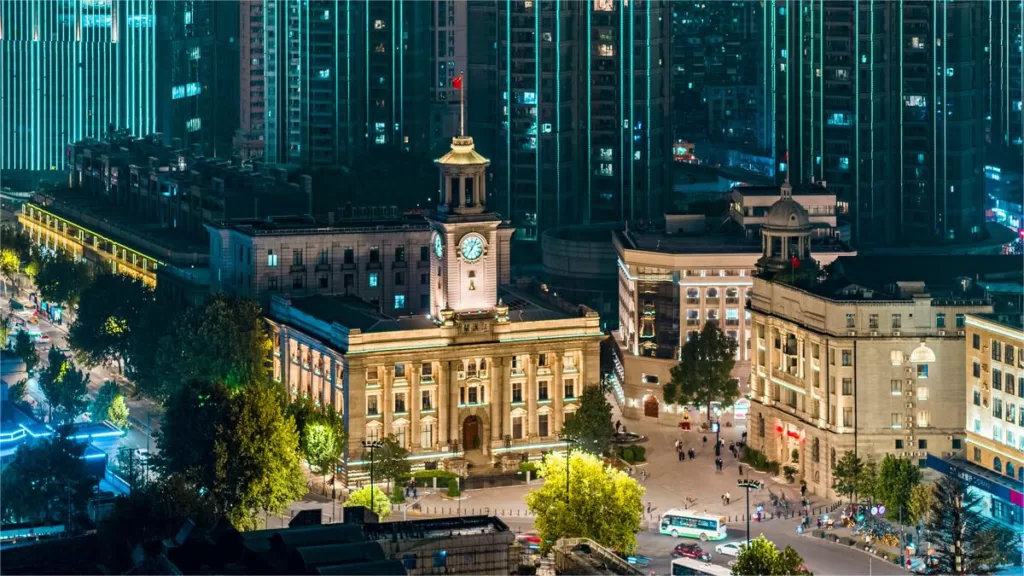Located at 1 Chezhan Road, Jiang’an District, Wuhan, the former site of the Consulate General of the United States in Hankou (汉口美国领事馆旧址) stands as a captivating testament to the historical ties between the United States and Wuhan. Resembling a majestic medieval fortress, this site, established in 1861, mirrors the evolution of international relations in the heart of China.
In April 1861, two months after Hankou was established as a foreign trading port, The United States had set its consulate in Wuhan. However, it wasn’t until the completion of the striking red Baroque-style consulate building in 1905 that the consulate officially relocated from Hanyang to this new architectural marvel in Hankou.
This 108-year-old structure is a three-story brick building facing the Yangtze River, characterized by a stepped design with three different height levels along the riverfront façade. The central and largest entrance features an arched doorway, leading into a grand hall with soaring ceilings. The exterior walls on all three levels consist of plain red bricks, adorned with continuous semi-circular arched windows and prominent beltlines between each floor.
One remarkable feature is the curved façade, creating an inward dynamic flow with undulating and graceful lines, evoking a sense of movement. The four-story octagonal tower at the two street corners adds an extra touch reminiscent of medieval European castles. The building appears progressively lighter as it ascends, contributing to its overall elegance. Inside, the consulate exhibits luxurious detailing, including terrazzo flooring in hallways and polished wooden floors in rooms, all remarkably well-preserved to this day.
The consulate played a significant role in international interactions until the outbreak of the Pacific War in December 1941, leading to its closure. It reopened in 1945 after the victory in the war but closed again in May 1949 with the liberation of Wuhan. In 2008, the Consulate General of the United States in Wuhan was reestablished, although it moved to a new location. The former site, now known as Wuhan Talent Market, serves a different purpose, but its architectural grandeur and historical significance continue to resonate as a captivating reminder of the past.










